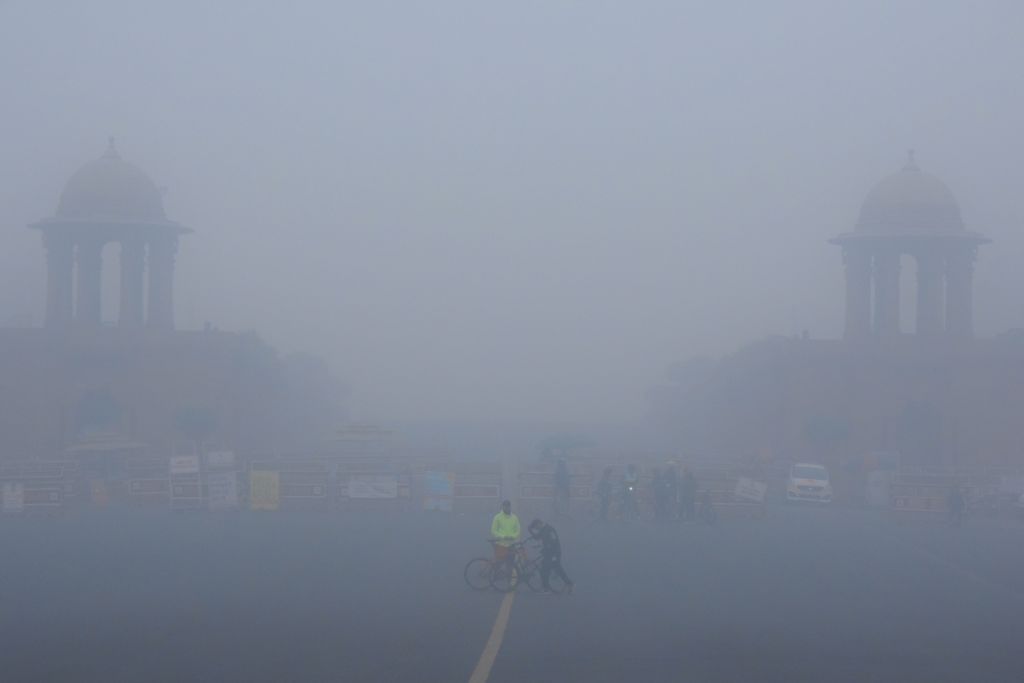
Many believe that the problem of air pollution, that peaks during the winter months, subsides with the arrival of warmer months. This may be the case with the smog, but even during the summer season, Delhi’s air is far from clean.
Air quality in the national capital remains poor throughout the year. On Monday, February 22, the average PM 2.5 concentration in Delhi’s was 140 µgm-3, which is more than double than the safe limit.
Delhiites on their part pay a big price because of the year round high levels of pollution in the city. According to Greenpeace Southeast Asia analysis of IQAir data from a live Cost Estimator, developed in collaboration by Greenpeace and IQAir, air pollution in Delhi claimed an estimated 54,000 premature deaths in 2020. And it cost Rs 58,895 crore, amounting to 13% of Delhi’s GDP.
In 2020, amidst the pandemic inducted lockdown, news of decreased air pollution in Delhi was making the rounds, but that did not last.
According to a report released by the CPCB called Impact of Lockdown on Ambient Air Quality on September 23, 2020, Particulate Matter (PM) 2.5 levels in Delhi decreased 50% during the Covid lockdown from 2019 levels. PM10 levels plummeted 60% while nitrogen dioxide (NO2) fell 64%, benzene by 62% and sulphur dioxide (SO2) 35%, during the second phase of lockdown.
However, as the lockdown restrictions were eased from October onwards, air quality in the capital deteriorated. Come the winter months and news of smoggy mornings could be seen headlining the city pages of every newspaper along with the political blame game that follows it.
An analysis of pollution level in November by CPCB shows that air quality was worse than even last year. Data indicated that the 30-day average air quality index, or AQI, in November 2020 was 328, while it was 312 this month last year, both fell in the ‘very poor’ category. As standar AQI of CPCB, air quality between zero and 50 is considered “good”, 51 and 100 “satisfactory”, 101 and 200 “moderate”, 201 and 300 “poor”, 301 and 400 “very poor”, and 401 and 500 “severe”.
Interestingly, Delhi also saw nine “severe” air quality days in November compared to the seven “severe” days in November last year. Which has happened for the first time in four years, that a single month recorded such a high number of severe air quality days in a year.
But pollution didn’t go down in November. However, in December air quality was best in the last four years but it again deteriorated further from the second week of January. The western disturbance and subsequent rain brought some relief and relatively better air quality. The average air quality index (AQI) for December stood at 308. It was 337 last year, 360 in 2018 and 316 in 2017.
In January 2021, average 31 AQI was 323, falling under the ‘very poor’ category. While it was 285 in January last year. Air quality remained poor in February too. The cost estimator of IQAir and Greenpeace shows that from January 2021, PM 2.5 has claimed 15,000 lives in Delhi.
Now let’s look at the reasons behind the steep rise in pollution this year. Although various studies have found that there are several reasons behind winter pollution in Delhi and the Indo gangetic plain, namely meteorological reasons like wind speed and wind direction. Other year round local factors and thermal power plants are also major factors behind the deteriorating air quality.
However, this year scientists found it was because of the lesser precipitation and increased cases of stubble burning. In Punjab alone, 46.5% rise in incidents of stubble burning as per report by CPCB. while in Haryana it reduced by 28.6%. So, stubble burning remained one of the major reasons among others for the steep rise in pollution in Delhi during the month of November. But since air quality remained in the ‘very poor’ category even in January local factors and low wind speed are to blame.
Avinash Chanchal, Climate Campaigner, Greenpeace India, said, “Despite recording relatively better air quality this year due to strict lockdown, air pollution continues to be a serious public health issue which also drastically impacts our economy. For the governments of the day, it is crucial that investments are made towards green and sustainable solutions. When we choose fossil fuel over clean energy, our health is put at stake. Polluted air increases the likelihood of deaths due to cancer & stroke, spike in asthma attacks and worsening severity of Covid-19 symptoms.”
Doctors advise people to avoid morning walks during winter. They say breathing in polluted air can cause chest congestion, swelling of respiratory pipes and air chambers of the lungs and even lead to cancer.
The decline is primarily due to damage to the "heart-brain link" triggered by chronic kidney…
A French-style open-air café is drawing Delhiites back to a river they long forgot
The handset features a dual rear cameras, 6.72-inch 144Hz display, IP64 water resistance, and up…
Delhi Police raided a late-night illegal bar in Samaypur Badli, detaining 25 people and seizing…
A rear-end crash near Delhi Haat triggered a blaze that gutted both vehicles, though no…
Court grants probe agency more time as NIA pursues wider links in Red Fort blast…